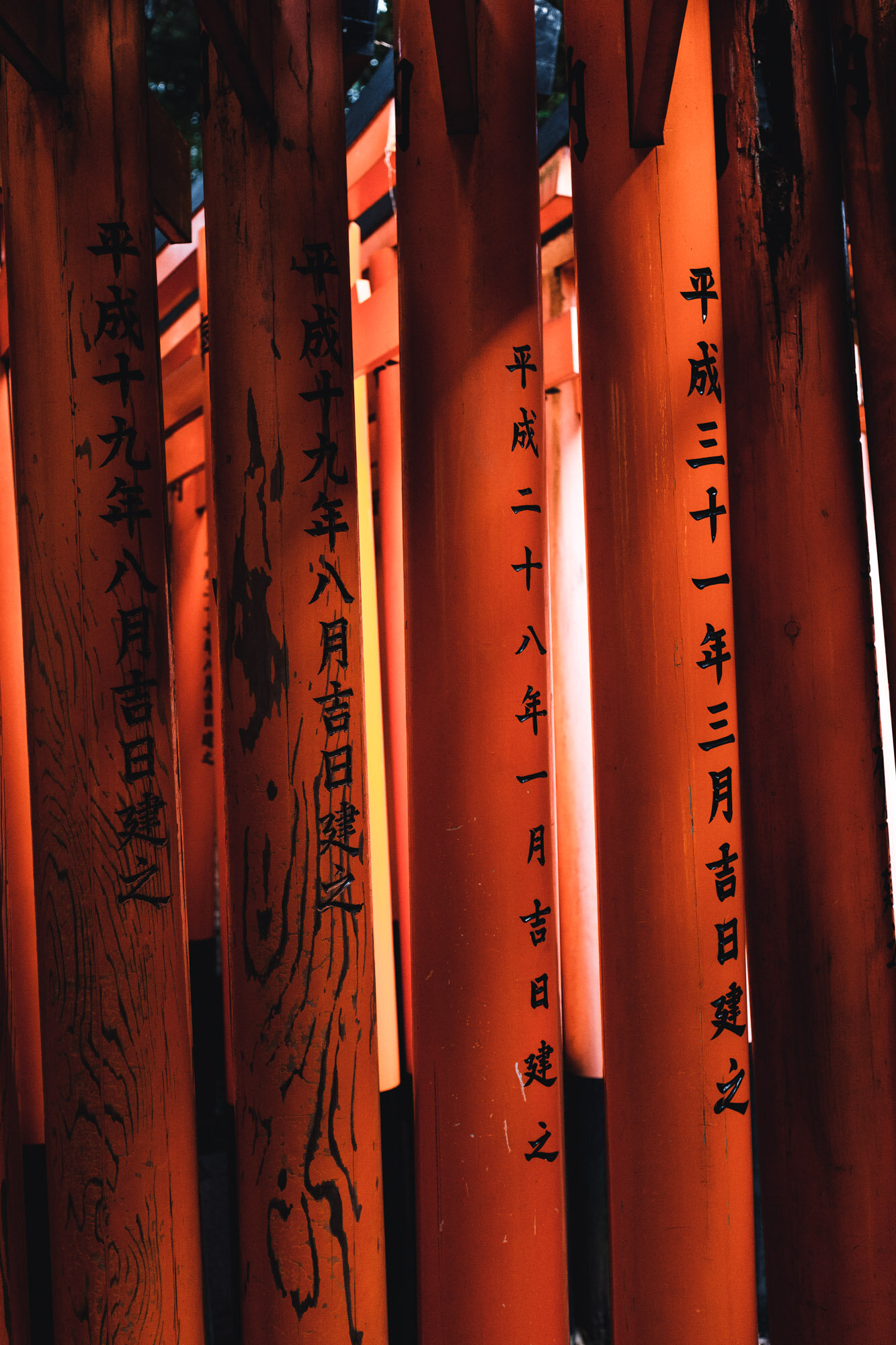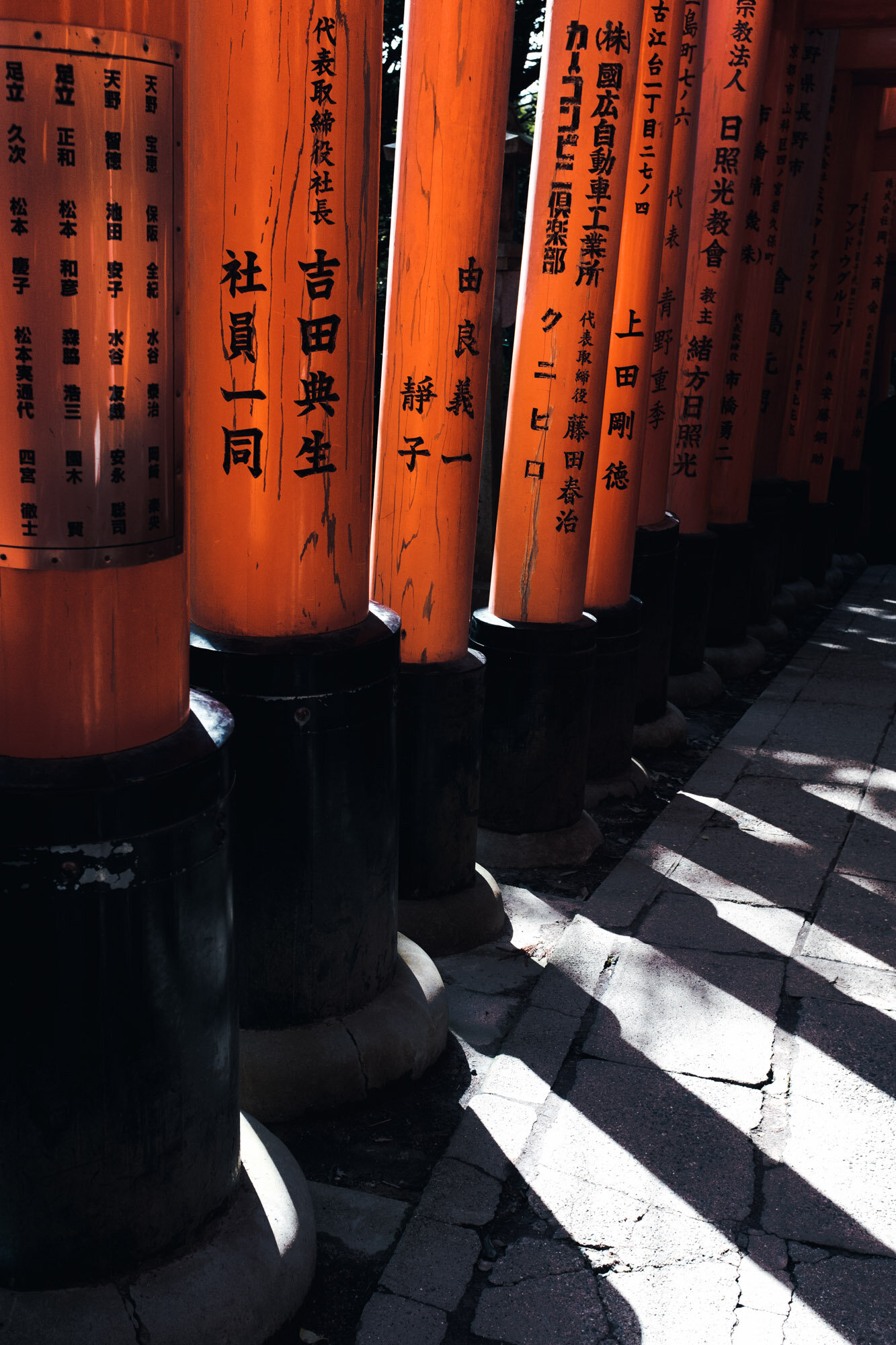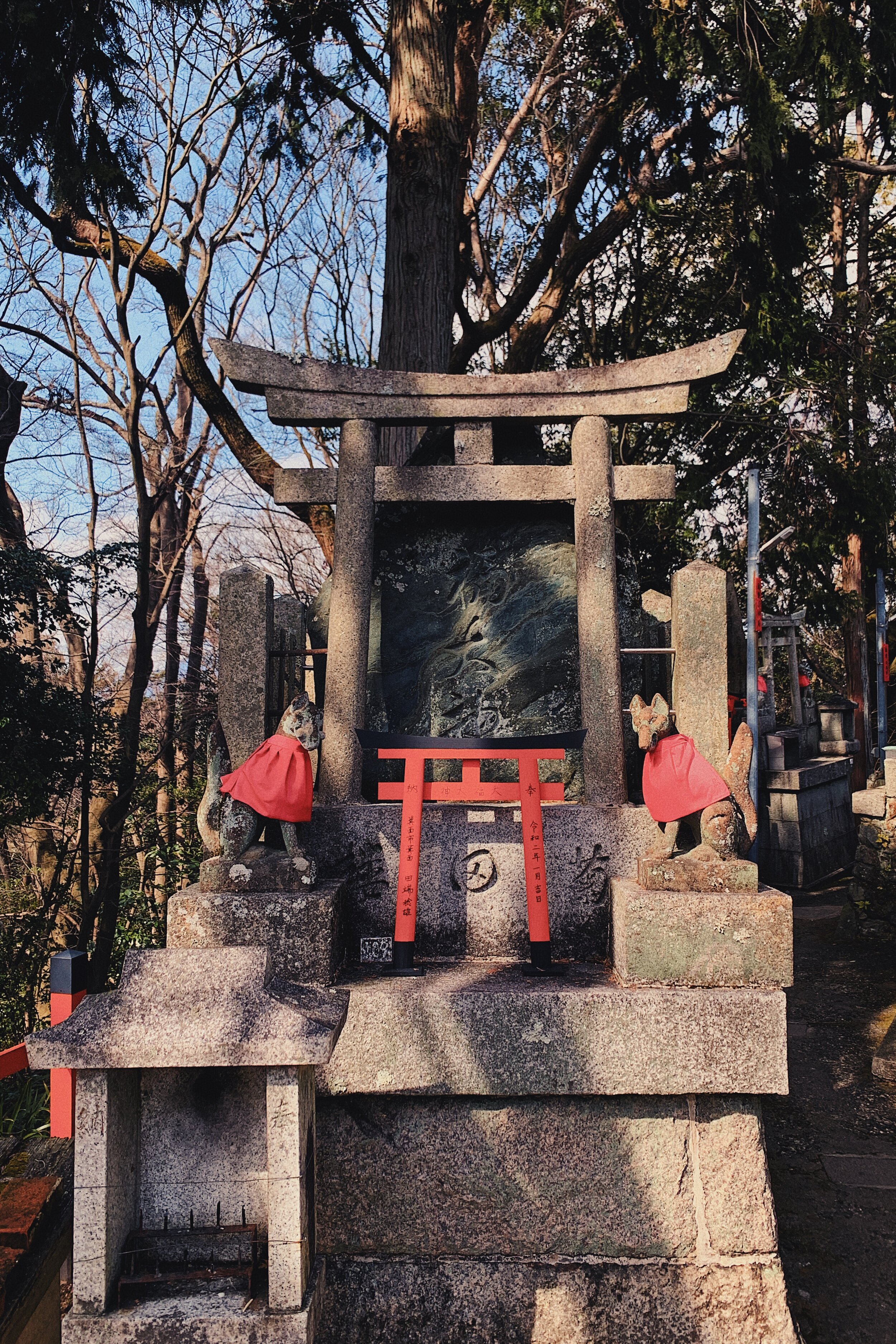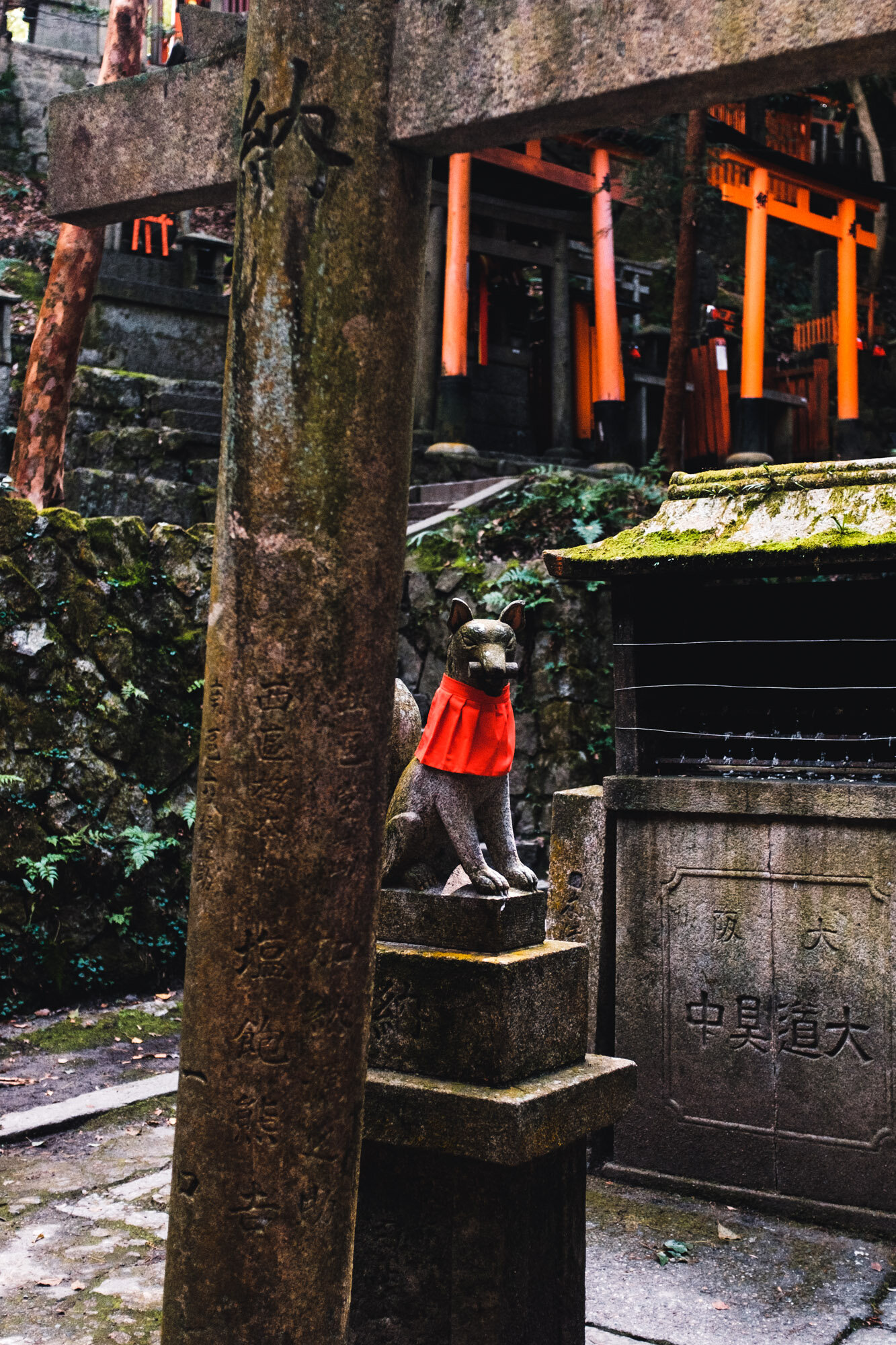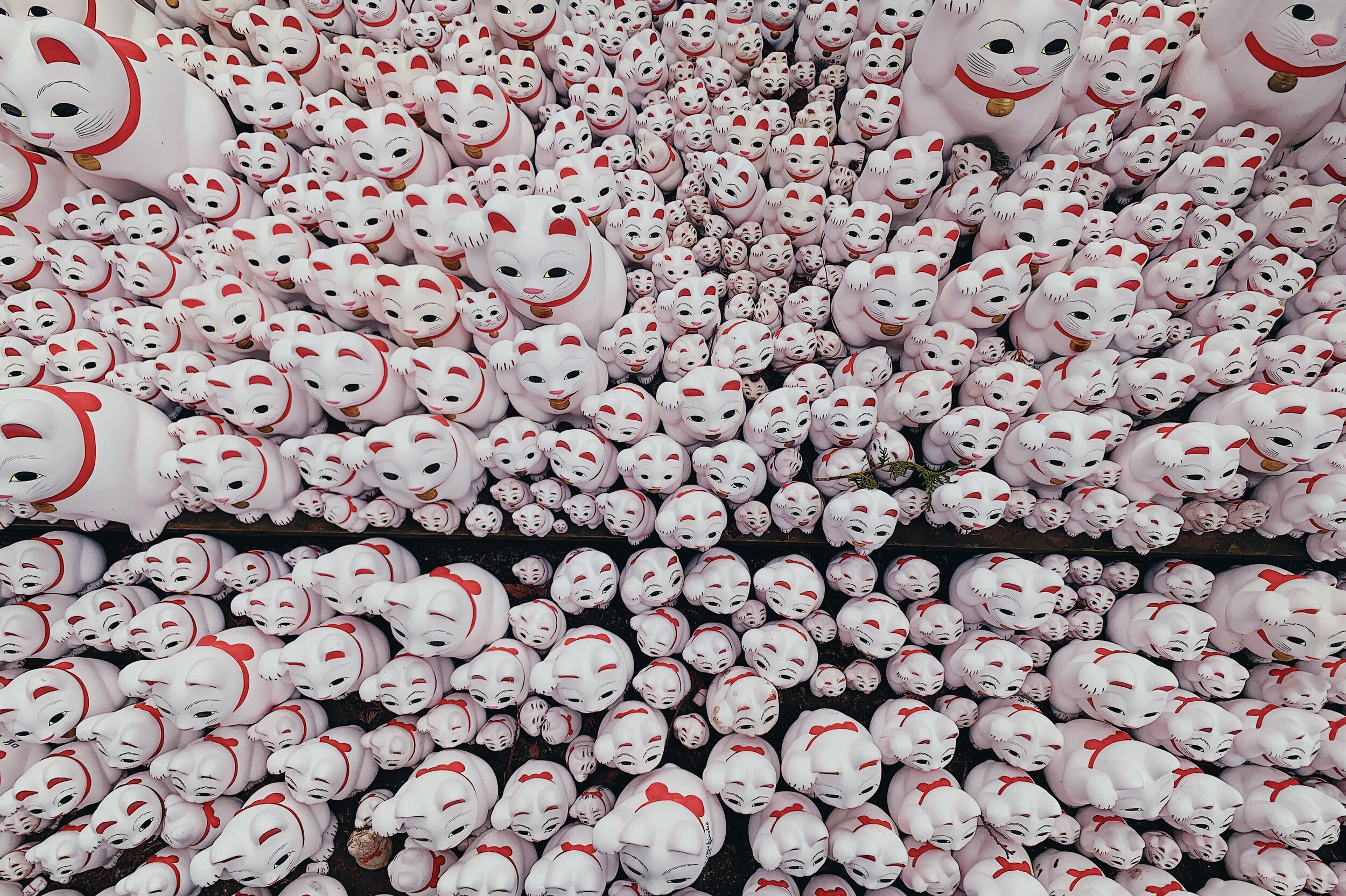Pilgrimages: Fushimi Inari Taisha — Kyoto, Japan
Whenever I’m in Kyoto, regardless of commitments, I always take the time to visit Fushimi Inari Taisha and all its vermilion glory.
I don’t know when it became my ritual. Perhaps upon my second visit when I repeated the feat of climbing the mountain all the way to the summit. It wasn’t a conscious action on the first two occasions, it was merely the right thing to do. But during the third ascent, I became aware of my movements and reaching several markers and small shops on the way to the top. On the fourth occasion, when I found myself at the gates of Fushimi Inari Taisha, on the outskirts of Kyoto, I knew. It was time to climb.
Fushimi Inari is one of Kyoto’s oldest and most historical landmarks, it was founded in 711 (although only moved to its present location in 816) and predates the capital’s move to Kyoto in 794. It was the object of imperial patronage during the early Heian period (794-1185) and achieved the denomination of Kanpei-taisha, the highest rank given to Shinto shrines.
As I arrive at the shrine and walk through Romon Gate, donated in 1589 by Toyotomi Hideyoshi, there’s already plenty of movement. Food stall sellers tout their delicacies, couples take their wedding photos in front of the main hall, and first-time visitors marvel at the sea of vermillion before their eyes. As Fushimi Inari Taisha is one of the busiest religious sights in Kyoto, to fully enjoy the shrine, I would have to visit in the small hours of the morning (the mountain is open 24/7).
Fushimi Inari Taisha is the head shrine of Inari, the Shinto god of rice and agriculture. With the social changes throughout the centuries, merchants eventually adopted Inari, and it became associated with profitable business and prosperity. Regarded as the god’s messengers, the fox features heavily in this complex; From statues, where the fox carries the key to the rice granary or a rice ball, to omori wooden plaques for wishes.
The highlight of the shrine, and the reason visitors make the trip to Fushimi each year, is at the back of the main building. Thousands of vermillion torii gates straddle a network of hiking trails into the wooded forest of the sacred Mount Inari.
En route to the summit, I pass through the Sebon Torii, two dense, parallel rows of gates. The pace is slow, and the mass of heads held high to take in all the details of each structure. Sometimes, someone stops abruptly to take a photo, and those behind require a quick reaction and swift footwork to avoid a crash. Thankfully, the Sebon Torii is only a short portion of the hiking trail. As soon as I reach Okuno-in prayer hall, I dodge visitors and worshippers and disappear through another path covered with gates.
The mountain stands at 233 meters above sea level and its trails span four kilometres, which can take around two hours to climb depending on fitness level, number of people about and need to photograph all the sights. I prefer to take it slowly, and playing a game of spot the differences between each gate. Some are ancient, with splintered wood and faded paintwork, others burn like embers when the sun shines between the canopy of trees.
The gates are donated by individuals and companies with their names and donation dates carved on the back; This is also the reason why the toriis are not all the same dimension, half a million yen only gives you a small sized gate. Halfway up the mountain, there’s the Yotsutsuji intersection with views over Kyoto. Beyond this point, the toriis decrease significantly, but the number of small shrines and fox statues increase exponentially. It’s my favourite part of the trail when I can spend even longer exploring the grounds and discovering curiosities — like a fox statue so covered in moss that it appears it grew a venerable green moustache.
At the highest peak, Ichinomine stands Kamisha Sinseki shrine. The circular area, stacked high with small toriis, enshrines the deity Suehiro Okami and marks the end of the trail. To go back down, I usually take the path that leads to the village instead of the temple. But before that, I’ll pray for prosperity and buy a cold green tea from the nearby vending machine.



